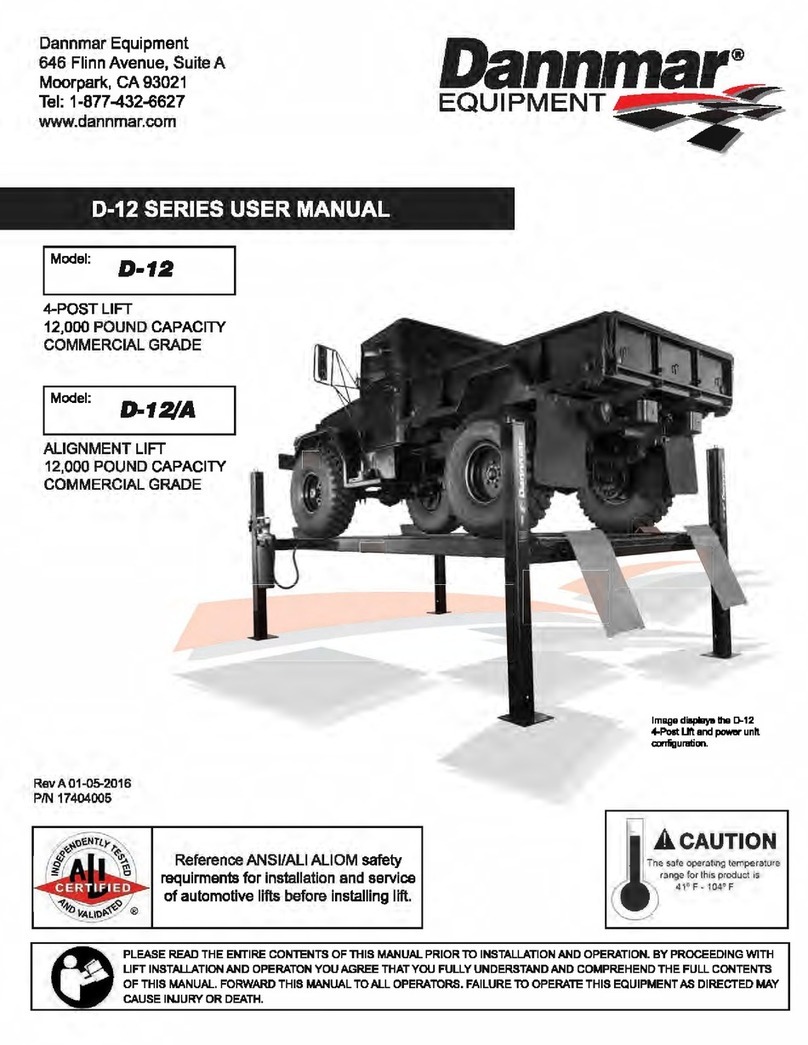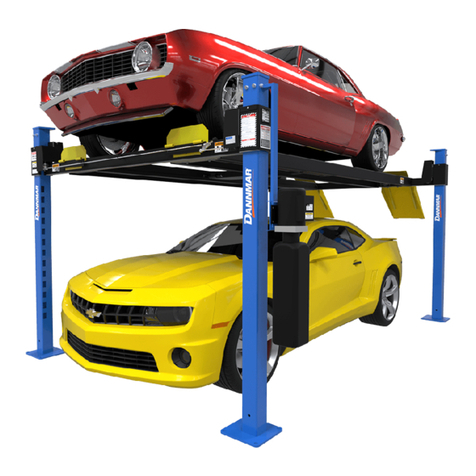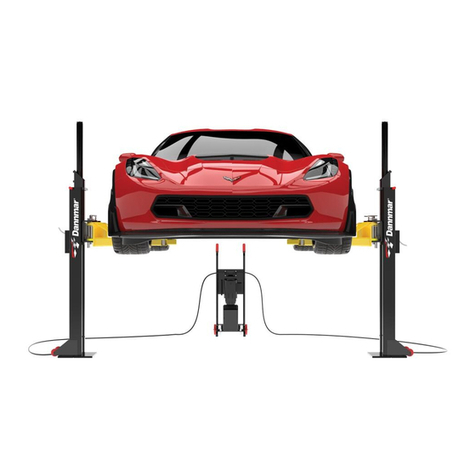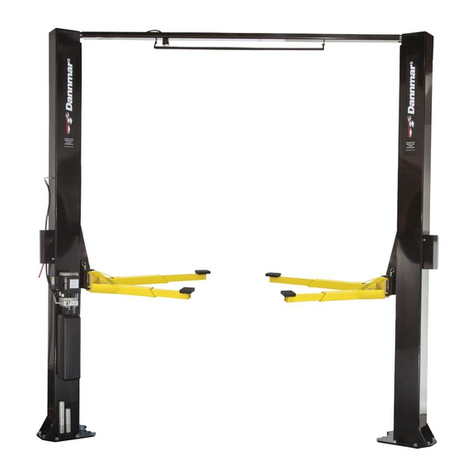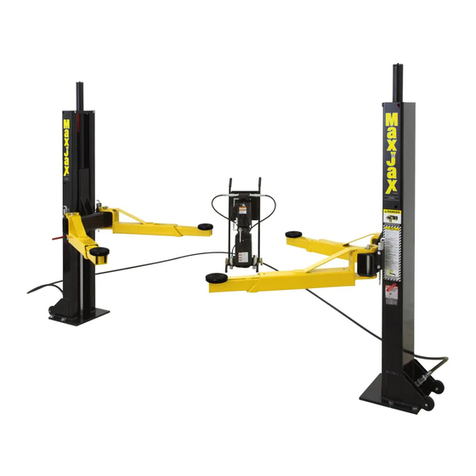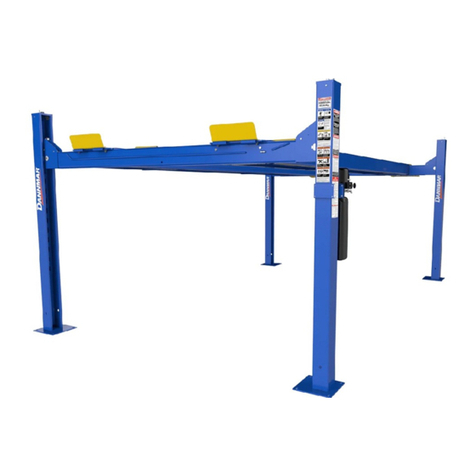
D2-10 Series Two-Post Lifts 6P/N 5900249 — Rev. B — February 2021
Frequently Asked Questions
Question: What kinds of Vehicles can I raise on my D2-10 Series Lift?
Answer: Cars, trucks, SUVs, and so on; up to 10,000 lbs (4,536 kg) each.
Q: How long will it take to raise or lower my Vehicle?
A: Anywhere from 60 to 70 seconds, depending on how high you raise it.
Q: Does the Lift have to be anchored in place?
A: Yes. Two-Post Lifts
must
be anchored. Your Lift comes with high-quality Anchor Bolts; use only
the Anchor Bolts that came with your Lift.
Q: How thick does my Concrete have to be?
A: 4.25 inches thick, 3,000 PSI, cured for a minimum of 28 days. Do not install the Lift on cracked or
defective Concrete.
Do not install on asphalt or any surface other than Concrete
.
Q: Can I install my Lift outside?
A: No. All D2-10 Series Lifts are approved for indoor installation and use only.
Q: How long can I leave a Vehicle raised up on my Lift?
A: For a long time, as long as you leave the Lift engaged on its Safety Locks. Once the Lift is
engaged on its Safety Locks, gravity holds it in position.
Only leave your Lift either on the
ground (fully lowered) or engaged on its Safety Locks
.
Q: How many Safety Lock positions does my Lift have?
A: Fourteen, spaced every 3 inches.
Q: Does the Lift have a Front and Rear?
A: Yes and no. Because you can drive onto a two-post Lift from either opening, there is technically
no Front and Rear. However, most garages have an Approach side and a Wall side, so in that
case, the Wall side is the Front and the Approach side is the Rear. If you have an Asymmetric Lift,
the long Lift Arms are on the Approach side.
Q: What is the difference between a Symmetric and an Asymmetric Lift?
A: The Bases of Symmetric Lifts face each other directly and when a Vehicle is on the Lift, it is more
or less balanced; the same amount of weight on either side of an imaginary line drawn between
the Posts. The Bases of Asymmetric Lifts are angled 30 degrees towards the Approach, making it
easier to open the doors of some Vehicles. When a Vehicle is on an Asymmetric Lift, about 30
percent of the weight is in front of the Posts and about 70 percent is behind the Posts.
Q: Are Vehicles on an Asymmetric Lift balanced?
A: Yes. Even though Asymmetric Lifts are angled, the Arms are positioned such that the Vehicle is
still balanced when raised on the Lift.
Q: How do I know where to put the Adapters when I want to raise a Vehicle?
A: The Vehicle needs to be balanced, so you must put the Adapters (sometimes called Pads) so that
they contact the manufacturer’s recommended Lifting Points.
If you do not know where the
manufacturer’s recommended Lifting Points are on a Vehicle, you must find out
before you raise it
. Your Lift came with books that will help: Vehicle Lifting Points for Frame
Engaging Lifts shows the Lifting Points for hundreds of Vehicles. Lifting It Right includes
information about how to raise Vehicles correctly.












